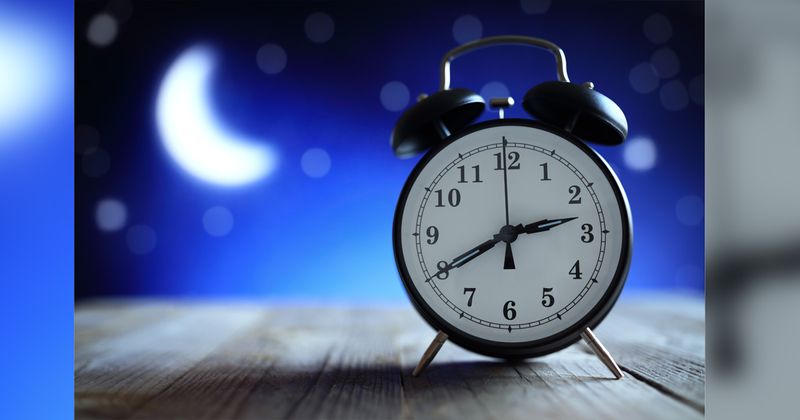Sleep important factor in development of long-term CV outcomes
Sleep could have a significant effect on CV health and long-term CV outcomes, and factors such as obstructive sleep apnea and sleep duration may warrant consideration among patients with hypertension, a speaker reported.

During his presentation, Virend K. Somers, MD, PhD, Alice Sheets Marriott Professor and director of the the cardiovascular and sleep facilities at the Mayo Clinic’s Center for Clinical and Translational Science in Rochester, Minnesota, discussed how hypertension, obstructive sleep apnea (OSA), treatment with continuous positive airway pressure (CPAP) and sleep duration could all impact a patient’s risk for CV events.

“It is very clear that as you get into deeper non-rapid eye movement sleep, your sympathetic activity goes down, your blood pressure falls and your heart rate slows,” Somers said during the presentation. “On the other hand, during rapid eye movement sleep, a time when dreams are most likely to occur, what you see are very marked increases in sympathetic drive with abrupt fluctuations in blood pressure. Now, these are all physiologic changes. We expect these to happen and these are important to good homeostasis of brain function and also of the cardiovascular system. It’s when the system goes awry that we have a problem.”
A study published in Circulation evaluated BP fluctuations during sleep among patients with and without hypertension. According to the presentation, researchers observed that patients, with or without hypertension, who experienced an appropriate drop in BP during sleep had significantly lower left ventricular mass index compared with patients with hypertension and no nocturnal drop in BP.
“The message here is there is something special about blood pressure during sleep that seems to have a more-than-expected impact on cardiovascular outcomes in people with hypertension,” Somers said during the presentation. “Having said that, there is a flip side to this argument, and that is while an absence of a blood pressure fall during sleep is bad, an excessive nighttime blood pressure fall can also be deleterious.”
According to a Japanese analysis, individuals whose BP drops too far during sleep experienced multiple silent lacunar infarctions as assessed by a CT scan.
Somers also addressed whether OSA was associated with hypertension, and therefore, whether treatment of sleep apnea can improve CV outcomes.
According to the presentation, findings from the Wisconsin Sleep Cohort study demonstrated that individuals with worse OSA were more likely to experience incidence of new-onset hypertension.
“Why would sleep apnea be linked to hypertension? When you develop obstructive apnea, you stop breathing and your oxygen levels fall, and your carbon dioxide levels go up,” Somers said during the presentation. “The low oxygen stimulates peripheral chemoreceptors in the internal carotid artery. The high carbon dioxide stimulates central chemoreceptors in the brain stem. Both will cause hyperventilation and sympathetic activation. Now hyperventilation has a buffering or protective effect on the sympathetic nervous system, keeping the sympathetic nervous system down, but in obstructive apnea, you’ve got low oxygen and high CO2, but you are not breathing. You do not have the hyperventilation and so sympathetic activation becomes excessive.
“That sympathetic vasoconstriction gives you intra-arterial blood pressures as high as 240/130 mm Hg, which decreased with continuous positive airway pressure (CPAP) therapy. Does CPAP treatment affect hypertension in patients with obstructive apnea? The data are not very impressive,” Somers said during the presentation.
Results from a meta-analysis indicated that treatment of OSA with CPAP results in statistically insignificant BP reduction of between 2 mm Hg and 3 mm Hg. However, some patients experienced a drop of up to 10 mm Hg.
“While you may have sleep apnea and hypertension, it doesn’t necessarily mean that sleep apnea is always causing the hypertension,” Somers said during the presentation. “It is important to recognize that treating the apnea would affect the blood pressure if the apnea was causing the hypertension.”
Moreover, findings from the HIPARCO randomized controlled trial showed that in resistant hypertension, treatment of OSA with CPAP conferred a nonstatistically significant systolic BP reduction of 3.1 mm Hg (P = .1), which was most prevalent among participants with good adherence to CPAP treatment.
Somers also discussed associations between sleep duration and restriction on CV health and hypertension.
A study published in Hypertension in 2006 showed that sleep duration of 5 hours or less conferred an approximately twofold increased risk for hypertension.
Additional research conducted at Mayo Clinic used electroencephalogram to evaluate sleep deprivation among 14 individuals. What researchers found was that individuals who were sleep deprived and had flow-mediated vasodilation experienced a narrowing of the brachial artery that was not observed in the control group (P = .003).
In the Nurses Health Study of 71,617 women aged 45 to 65 years, investigators found that individuals with sleep duration of approximately 5 hours per night experienced a significantly elevated 10-year risk for incident CHD (RR = 1.82; 95% CI, 1.34-2.41) compared with those who slept 8 hours per night.
“Sleep is a heterogeneous state, that in itself induces significant changes in blood pressure that an absence of a fall in blood pressure during sleep is potentially dangerous, but so is an excessive fall in blood pressure,” Somers said during the presentation. “Obstructive sleep apnea has been linked to hypertension, but in terms of treating the hypertension/obstructive apnea mix, you need to bear in mind the importance of sleepiness, the severity of nocturnal hypoxemia and that CPAP really needs to be used to be effective. Lastly, bear in mind that sleep deprivation, while pervasive, is potentially an important cause not just of high blood pressures and impairment in endothelial function, but also an increased likelihood of future coronary artery disease.”

